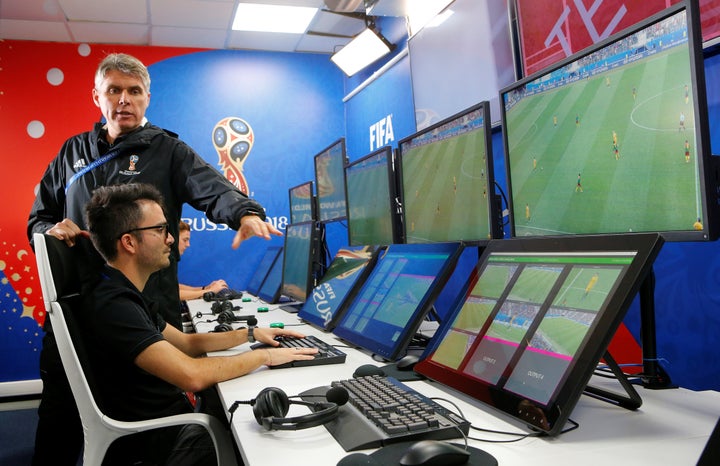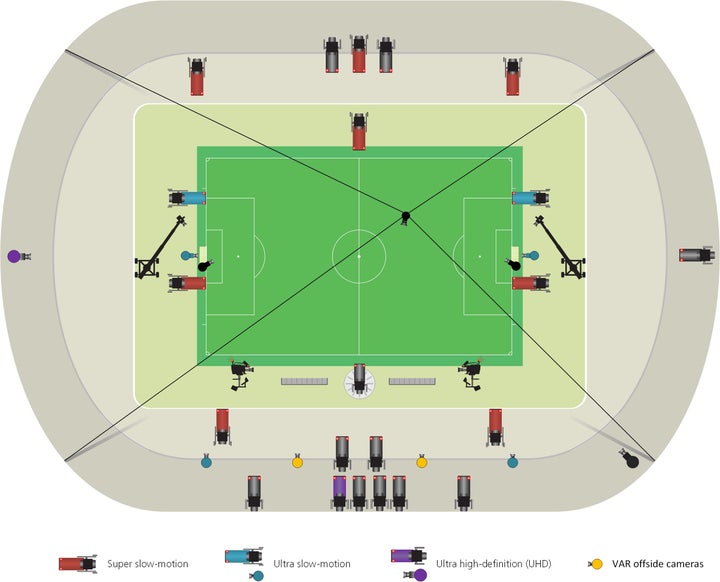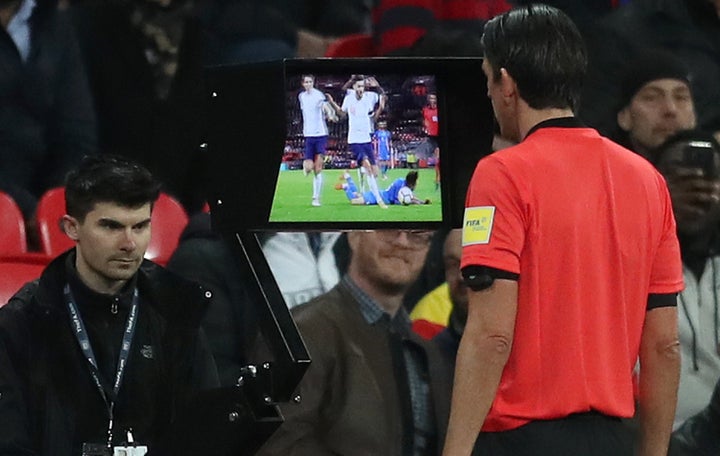If you happened to watch the France vs Australia World Cup game at the weekend then you probably witnessed some history being made.
France’s 2-1 win was thanks to the referee’s decision to award two penalties using an all-new technology known as the Video Assistant Referee (VAR).
While tennis, cricket and rugby fans will already know this technology well as Hawkeye, or the Television Match Official (TMO) this is the first time in history that football has finally allowed the feature to be used during a major tournament.
To help cut through the noise and the controversy surrounding it here’s our simple explainer of what VAR is, what the rules are and how it works.
What is VAR?
VAR is a new video refereeing system for football that will provide refereeing support for all 64 games of the 2018 World Cup.
To be absolutely clear, the VAR cannot make decisions during a game. Instead it simply supports the referee down in the stadium by providing them with real-time video analysis using a huge network of cameras including some pretty advanced 3D modelling software that can specifically check if a player is offside or not.
The role of the VAR is to check for four specific infringements throughout the game:
If a player is offside during the game.
If a player has committed a penalty-awarding foul within the penalty box.
If a player has committed a bookable foul during routine play.
If a player has been wrongly cautioned or booked due to a case of mistaken identity.
Who controls VAR?
Unlike other video referee systems, just one team of four Video Assistant Referees provide support for all 64 matches. They do this from a centralised operations room located at the International Broadcast Centre in Moscow.

Each of the four officials has a very specific job during the game and will focus on the following tasks:
VAR - This is the lead assistant referee who watches not only the main live feed but a quad-view split-screen monitor underneath giving them all angles of the game. They are the person who speaks to the referee in the stadium.
AVAR1 - This referee’s job is to look at the main live feed and alert the rest of the team if an incident has been selected for review or is being looked into by the officials down on the ground.
AVAR2 - The AVAR2′s role is to look at the TV programme feed (so what we see when we’re watching a match live) and to help factor any angles caught by this feed into the decision making.
AVAR3 - Finally, the AVAR3 has potentially the most technical job out of the four. Their responsibility is to constantly asses the match for any offside infractions and to alert the VAR to these as and when they’re spotted. They do this using a special piece of software similar to Hawkeye.
How does VAR work?
Quite simply, VAR works because it sees every conceivable angle of the football game at any one moment.
During each game the VAR has access to a whopping 33 different cameras including eight super slow motion cameras, two ultra slow motion cameras, two Ultra-HD cameras and two specific smart cameras designed to detect when a player is offside.

In addition to the normal cameras, the referee has access to 3D offside system that has been developed by Hawkeye (you might know them from tennis or cricket).
The Hawkeye system uses laser tracking to overlay a virtual grid of offside lines onto the pitch. The grid is painstakingly calibrated by both Hawkeye and FIFA before each game so the referee’s can make their decisions with the confidence that if a player looks offside, they are.
Once the VAR team has analysed a potential incident it can then speak directly to the referee and make their recommendation.
The Referee then has the ability to head over to a special booth at the side of the pitch and see the same footage that the VAR team have presented on a high-resolution display.

Finally, upon seeing the footage the referee has the ability to either stand by their original decision or agree with the recommendation of the VAR.
